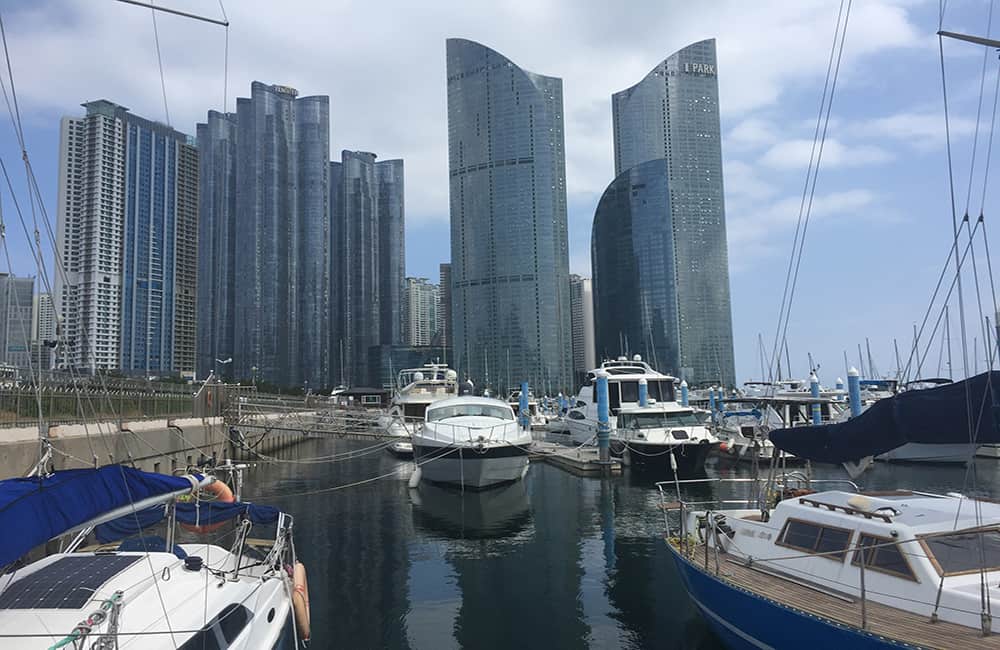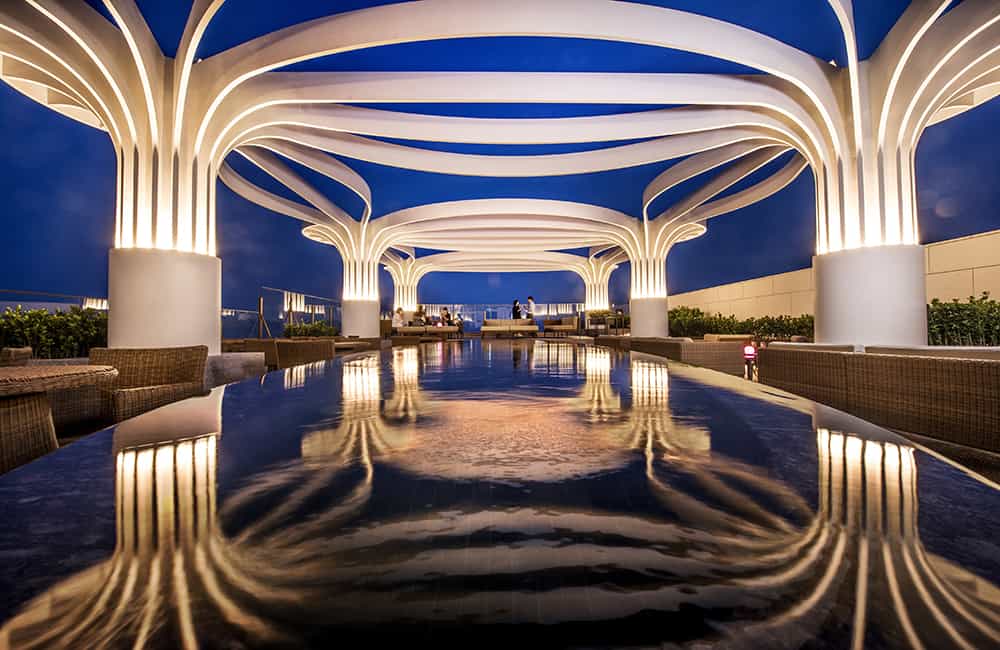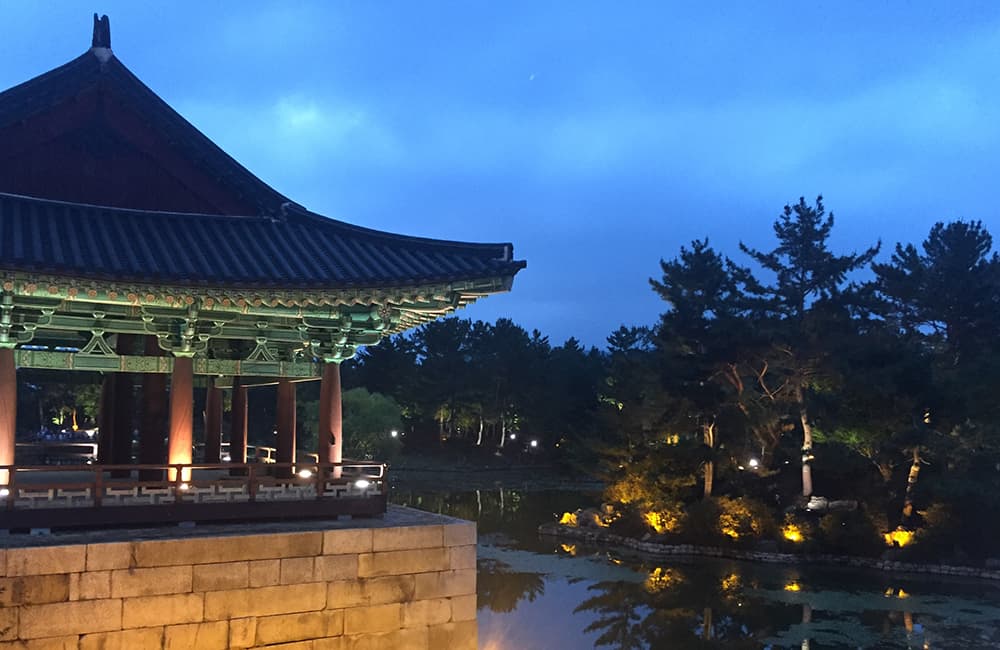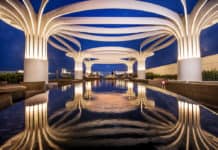A sense of mystery and the exotic lends a FOMO air to South Korea as an incentive possibility.
It’s impossible to sum up the South Korea experience in just a few words. It’s the juxtaposition of serene Buddhist temples and the most mind-blowing technological advances. Where K-pop culture and ancient traditions coexist. Where the Korean War has been the defining event, and hopes for reunification still exist.
Most of the country was rebuilt after the war, and the cityscape of Seoul is packed with the functional concrete towers of that era. But the architecture of today is stunning and soaring toward the sky, like the waterfront of Busan, where 70- and 80-floor glass skyscrapers are rising above the sea—a reflection of the new generation and bright future of this fascinating country.

Busan, a two hour and 15 minute ride from Seoul on the KTX Rail bullet train, is the country’s second-largest city, known for its beaches and port—and often overlooked by visitors. Yet it has the level of hotels and attractions to stand on its own as an incentive location, or in combination with Seoul.
Busan’s beaches are the bustling variety, lined with hotels and boardwalks packed with runners and vacationing couples strolling along. One of its main attractions is the Gamcheon Culture Village, a collection of colorful buildings that sit on a hillside above the rocky shoreline, reminiscent in some ways of Santorini. Also overlooking that rugged shore is the exquisite 310-room Hilton Busan, the first hotel in South Korea with three pools. Guests can lounge in the heated infinity pools with panoramic views of the waves crashing over the massive boulders below; relax in its impeccably designed library (with hundreds of books to borrow on topics ranging from art to architecture); or visit the Water House, with hot spring water pools, saunas and spa facilities. The resort can accommodate meetings for up to 1,500 attendees.

Must-See Historic Sites
Half of South Koreans are Buddhists and the country is home to several UNESCO World Heritage Sites, many of them centered around temples. The mighty Changdeokgung Palace Complex stands against the backdrop of Mt. Bugaksan and is also known for its perfectly manicured gardens and lotus pond. Another must-see temple is located at Gyeongju. Groups should time their visits to coincide with sunset for most impressive views, as the lights in the temples slowly come alive and are reflected against the inky stillness of Anapji pond. The region is dotted by burial mounds from the Silla Kingdom—an unforgettable sight to see, still perfectly shaped and tended to. In this culture, caring for your ancestors after death is as important as how you treat them in life.
A unifying experience in every part of this country is the exploration of its culinary charms. South Koreans view food as medicine, and indeed their cuisine has grown in popularity in the West because of its protective and probiotic qualities. Foods like kimchi (mixtures of salted and fermented vegetables) and exotic teas (from green tea to chrysanthemum) are now common everywhere.

A traditional Korean feast includes dozens of small bowls of dumplings, scallion pancakes, kimchis and marinated fishes with unfamiliar names being passed around the table, with diners comparing notes as they sample this and that. A stop at a Korean barbeque restaurant is a must for attendees to experience the crackle of the meats as they turn them on the grill and delight to the live show as the waiter sets the meal aflame. Some of the most exciting foodie experiences can be found on the streets of cities like Busan, where fish stalls display aquariums full of live eels and rows of hanging dried fish, many for only the bravest to try, like skate , which emits an odor that has been described as being “reminiscent of an outhouse.”
Seoul and Incheon
Most groups base themselves in Seoul at one of several incentive-quality hotels, including a Four Seasons located in the vibrant Gwanghwamun district. There are also a variety of choices around the massive COEX convention complex, including the luxurious InterContinental Seoul COEX. A new addition at the top of the Korean Lotte chain is the Signiel Seoul. Opened in 2017 inside Seoul’s highest tower, the Lotte World Tower, this high-end 235-room property has it all over the others as far as expansive city views from its upscale champagne bar or STAY, its Michelin-starred French restaurant, both on the 81st floor. The property can accommodate meetings of up to 400 people.
Traffic congestion in this massive city of 9.7 million people is a challenge, even in midday. A charming alternative for groups arriving at Incehon Airport is the Gweongwonjae Ambassador, a luxury Accor property located just minutes from the airport. The hotel was built in 2016 using traditional Korean architecture, and its 30 rooms feature unique Korean Ondol floor heating and Korean-style beds. Two meeting rooms can accommodate 300 attendees.






